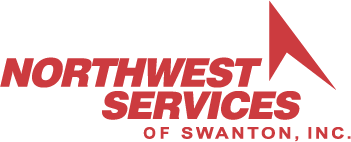
Ceiling fans are one of the most underappreciated ways to enhance comfort and reduce energy costs. By boosting air circulation and working in conjunction with your HVAC system, ceiling fans and energy efficiency are truly a match made in heaven. They offer a practical, cost-saving way to stay cool while easing strain on your AC—potentially sparing you from unnecessary air conditioning repair.
In this blog, the experts at Northwest Services break down how ceiling fans can make your home feel more comfortable while avoiding energy waste with increased HVAC efficiency. We'll also provide some HVAC efficiency tips that put to good use ceiling fans.
Comfort vs. Temperature: The Effect of the Wind-Chill Effect Indoors
Ceiling fans don’t actually lower the room temperature—they cool you down by increasing air movement across your skin. This is known as the wind-chill effect, and it can make a room feel up to 4 degrees cooler without lowering the thermostat. That means you remain cool and enjoy the benefits of indoor air circulation from your ceiling fan while minimizing air conditioner use—helping reduce your electric bill in summer.
The Best of Both: Benefits of Using Fans and Air Conditioning Together
There are several advantages to using ceiling fans and air conditioning in tandem, especially when it's very hot outside. By pairing both, you increase HVAC efficiency and maintain a comfortable indoor temperature with less effort from your cooling system.
Why you should use ceiling fans and AC together:
- Ceiling fans help lower HVAC load by moving cool air more evenly around the room. Reducing HVAC stress is important, because it can prevent a breakdown that may lead to premature AC or furnace installation.
- Using overhead fans boosts the comfort level of your home by eliminating hot spots and improving air movement.
- Combining ceiling fans and AC can cut energy consumption. If you have a home automation system, you can even fine-tune your smart thermostat settings to increase the temperature slightly while your ceiling fan is running.
Clockwise vs. Counterclockwise Ceiling Fan Rotation: What Direction to Spin in Summer and Winter?
To maximize the benefits of your ceiling fans year-round, it’s important to set the blades to rotate in the right direction for the season. The direction affects how air moves, which can either or push warm air downward so you feel warmer.
When to rotate ceiling fans counterclockwise
When it's hot outside, ceiling fans should turn counterclockwise at a faster setting. This creates a breeze that pushes cool air downward, increasing the wind-chill effect and causing you to feel cooler.
When to rotate ceiling fans clockwise
On cold days, set your fan to turn clockwise on a low speed. This lifts cooler air and circulates heated air down to where you can feel it, making the space feel cozier without touching your thermostat.
Things to Look for in a Ceiling Fan
Selecting the ideal ceiling fan depends on a few key factors, including blade design, airflow rating and room dimensions. First, look for fans that offer a good combination of ECFM airflow and blade pitch to provide efficient air circulation in your space:
- ECFM refers to how much air a fan circulates—the cubic feet per minute, or CFM—per watt of electricity used. Fans with higher ECFM are more energy efficient.
- Blade pitch refers to the incline of the blades. A steeper blade pitch moves more air than a shallower pitch but can also put extra load on the motor.
Also, consider room size when sizing a ceiling fan—a fan that’s too small won’t circulate sufficient air, while one that’s too big may be disruptive in a smaller room.
Boost Your HVAC Efficiency With Help from Northwest Services
At Northwest Services, our HVAC experts can help you enjoy year-round comfort while reducing strain on your heating and cooling systems. From practical fan advice and air conditioning installation to smart thermostats and furnace repair, we offer comprehensive solutions that match your needs. Schedule your appointment by calling 419-574-6033 today.
